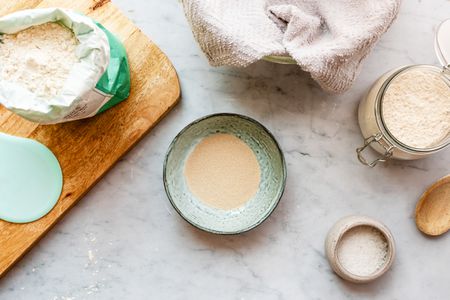Yeast that you buy from the supermarket comes in small packets, jars or in cakes. The tiny packets of active dry yeast are incredibly convenient. Each tiny packet comprises approximately 2 teaspoon of dry yeast. The cost per gram of yeast from the jar or cake may be less than the Packets, but if you are not baking frequently the yeast will probably expire before you can use it all up. In either case listen to the expiration dates recorded on the yeast vessel. Throw out any yeast that is beyond its expiration date since it would not be able to be triggered, nor it will minimize the magic of bread.

Yeast is a dry, powdery substance that is actually a living organism, a one-celled organism. A special feature of yeast is that it can survive for extended periods of time in a type of limbo or dormant state. Yeast cells will stay in this stasis until the perfect conditions are provided and you can find this in respected websites. Yeast needs a moist and warm environment so as to grow and multiply. Additionally, it requires some sort of sugar as a food resource.
Yeast survives on sugars since it is food supply. Based on the types of sugars present and the surroundings yeast will produce carbon dioxide or alcohol because of the growing process. Carbon dioxide is a gas and that is what makes the bubbles in bread dough. As the bread bakes the gas is trapped by the dough forming little holes in the bread. Therefore, we say that yeast raises bread. Yeast will absorb the sugars in grape juice and produce alcohol, a procedure we use if we make wine. Yeast, which may live from the sugars in barley mash, can also be utilized to make beer.
Yeast can survive a massive assortment of conditions. However, once the Temperature becomes too high or low, the yeast will die. High temperatures we use to bake bread will kill the yeast. Yeast will not survive temperatures greater than 140 degrees F. Since we bake bread in higher temperatures, the majority of the rising of the bread occurs at the beginning of the cycle.
After dry yeast is becoming wet it becomes activated. After becoming Triggered the yeast is no longer in its dormant state and will begin to multiply and create gas bubbles or alcohol. If the conditions are just right the yeast will continue to feed on the sugars present. It will grow and multiply, producing more gasoline or alcohol, until the food source runs out or before additional environmental variables control its fate.
